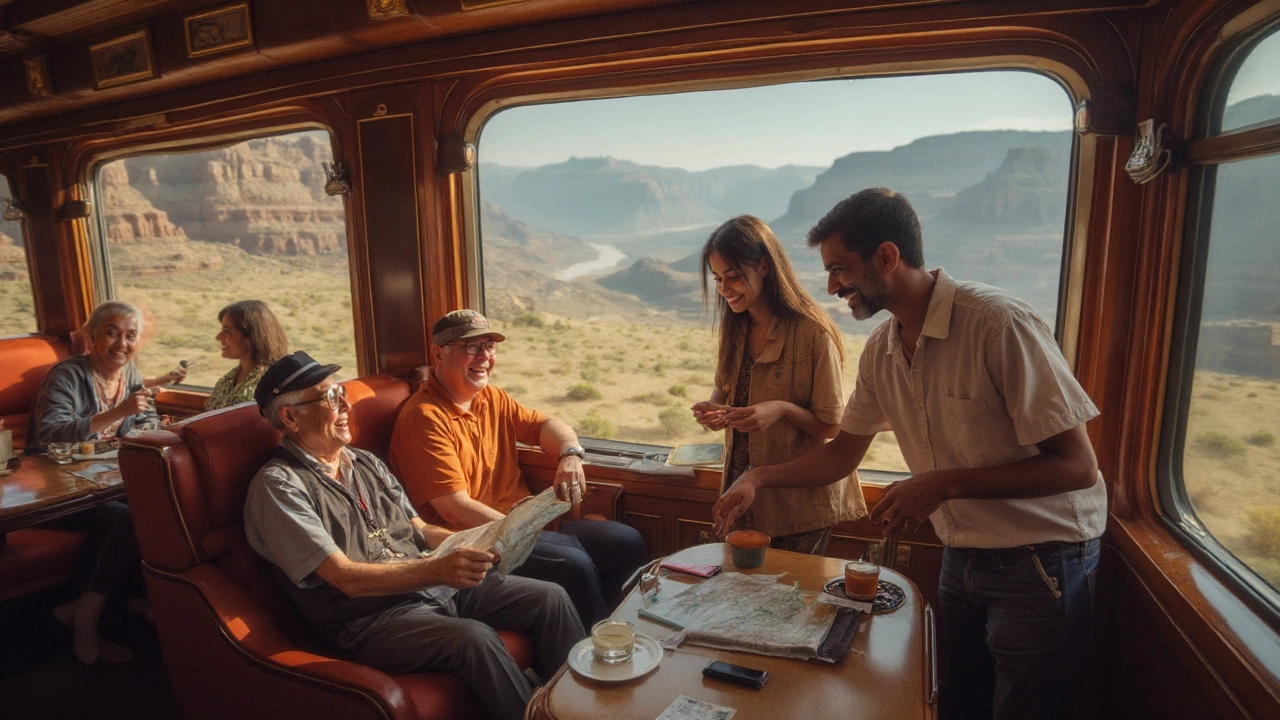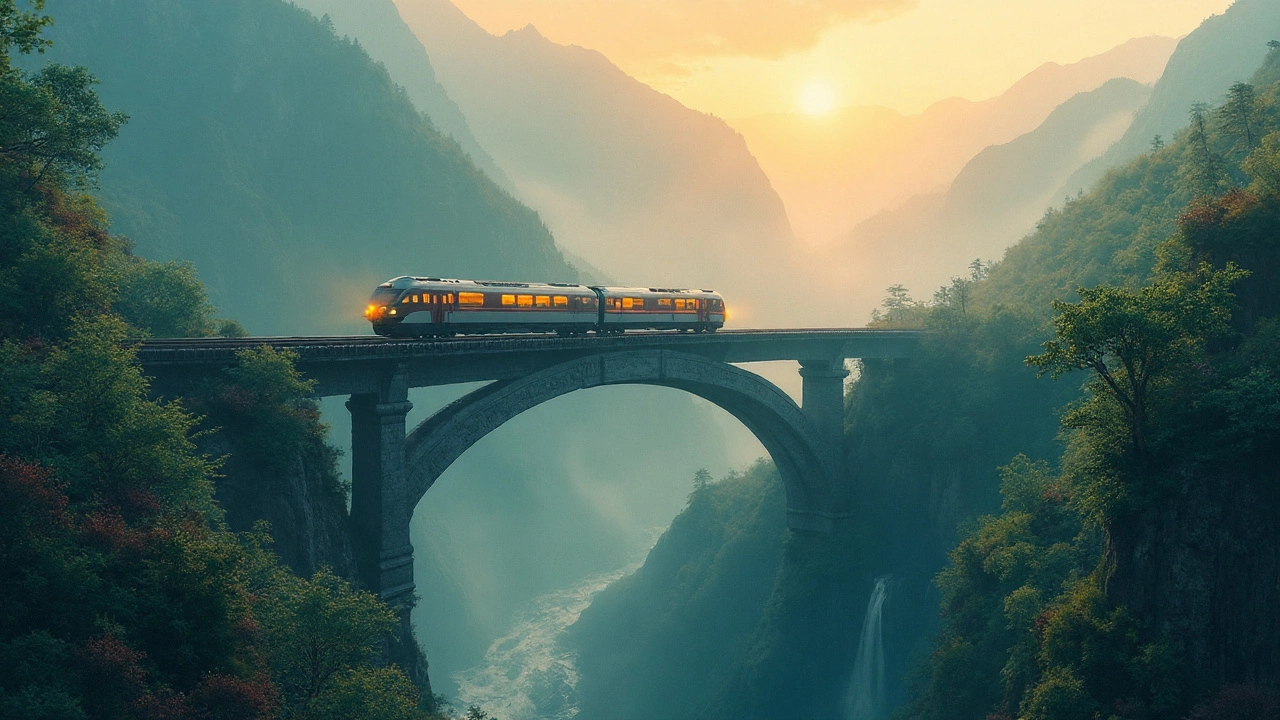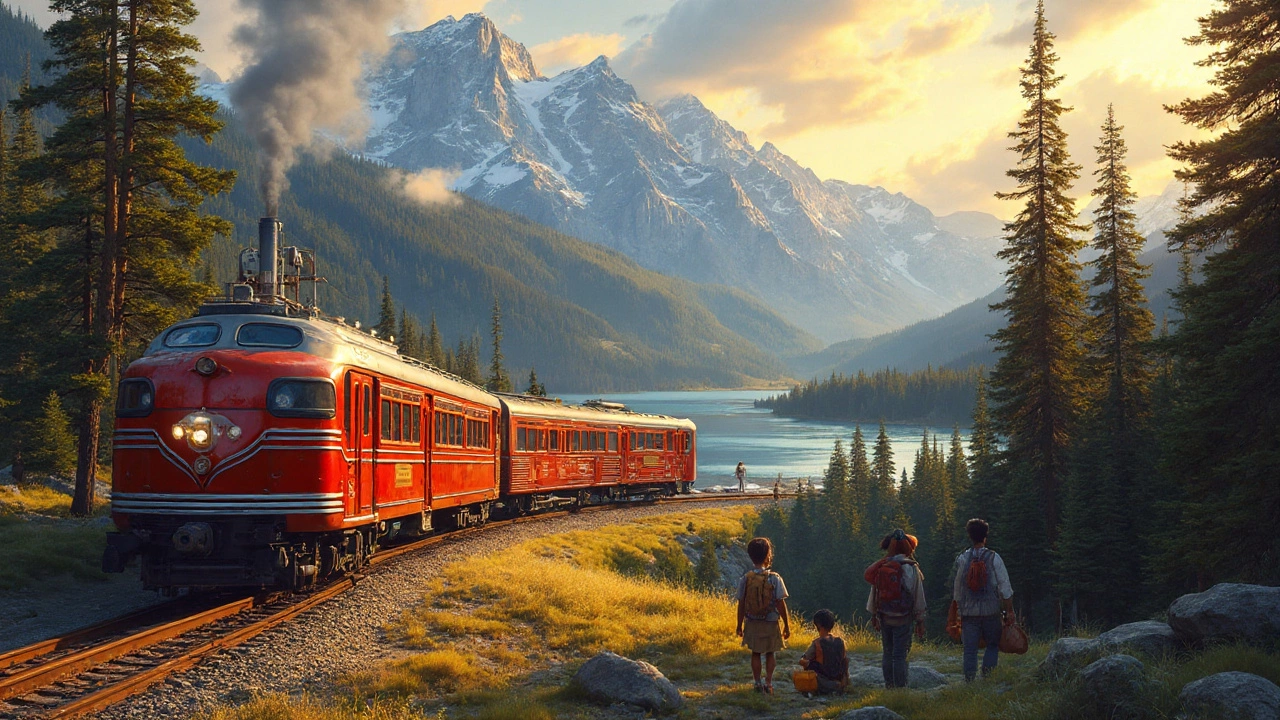Feeling cramped in an airplane seat, counting clouds, and waiting for a plastic-wrapped bag of peanuts? Forget that, because gliding through the American landscape by train is like hitting play on a time-lapse video, but you’re comfy, faced with panoramic windows, and holding a warm cup of coffee instead of turbulence-induced cold sweat. There’s one trip that stands out above the rest, topping every “bucket list” for rail dreamers: the route between Chicago and the West Coast, the Amtrak Empire Builder. It’s not just a ride—it’s a front-row ticket to some of the most jaw-dropping views in the country, without the stress of traffic or security lines. I’ll tell you why this is the ride that leaves even road trip die-hards speechless, and what you actually want to know before booking your ticket.
Why the Empire Builder is the Crown Jewel of US Train Travel
Let’s start simple: you want big, sweeping landscapes? This route has it all. The Empire Builder is Amtrak’s legendary line connecting Chicago with the Pacific Northwest—think Seattle or Portland—sprawling across roughly 2,200 miles in about 46 hours. This isn’t just a slog across farmland: you’ll trace the Mississippi River before breakfast, squeeze through the snowy peaks of Glacier National Park by lunch, then roll across the Big Sky Country of Montana and Idaho, before skirting volcanic peaks into the Pacific twilight. Just eight hours from Chicago, the river the train hugs isn’t a lazy creek, but a huge, twisty ribbon lined with steep bluffs and small, sleepy towns. Mark Twain would feel right at home. Then, as the hours tick by, the green gives way to the dramatic, open spaces where the sky feels unanchored. It’s not all wilderness—there are quirky flag-stop towns, wheat fields that run forever, and glimpses of bison and eagles if you’re quick.
Inside, you’ll notice something different than a city commuter train: everyone is there for the ride. Some faces are pressed to the windows, others are content with a good book—unless, of course, a volunteer naturalist from the National Park Service picks up the microphone for a quick story about the land flashing by. This is part of the Trails & Rails program, with actual rangers hopping onboard for commentary from St. Paul to Shelby, Montana in peak season. Where else do you get free, live storytelling during your trip? Those are the tiny details that make this journey an experience, not just transportation.
Then there’s the observation car, its ceiling curved like a greenhouse, lined with comfy swivel seats. Riders compete for these not because they’re exclusive, but because the spectacle outside honestly never gets old. Passing through Glacier National Park, you’re treated to scenery that no car can ever deliver—deep blue lakes, snowy summits, maybe soft herds of elk dotting the treeline. At sunset, the light stretches endlessly, and the sky puts on a color show that’s pure Montana magic. For some, the highlight is the everyday scenes: a kid waving from the platform in Minot, North Dakota, or cattle scattering under a vast sky.
Food isn’t a sad tray, either. The Empire Builder’s dining car serves up actual hot meals, with the clatter and conversation that feels right out of an old movie (except, maybe, for the WiFi). You can swap travel stories with a couple riding coast to coast for their 30th anniversary or eavesdrop on folks heading home to the next state over. If you want privacy, there are private rooms—with showers, beds, and all meals included. You also control your pace; get up, stretch, stroll between train cars, or just hang out in the observation lounge and chat with fellow travelers. There’s space for everyone, not just booked-in-advance business types. You can connect to the train at classic Union Station in Chicago or the gorgeous King Street Station in Seattle, both with enough history to please any architecture lover.
Travelers worried about modern comforts will be happy to know the Empire Builder’s cars are regularly updated: you get power outlets, solid lighting, roomy seats, and actual legroom. Amtrak doesn’t mess around with space—one seat could rival two airplane rows. Bathrooms aren’t a squeeze, there’s a cafe for snacks, and if you want to bring your bike, you can reserve a slot too. It’s the best excuse to pack heavier than you ever could for a flight. When it comes to reliability, this train does fall prey to weather delays and freight traffic—so flexibility is your friend. But at the end of the day, you’re there for the windows, not the ticking clock.

Tips for Getting the Most Out of Your Scenic Train Adventure
If you want to see the best the Empire Builder has to offer, planning makes all the difference. First, pick your travel season wisely. Late spring and summer bring wildflower explosions through the Dakotas and Montana, plus Amtrak’s Trails & Rails guides (yes, free ranger talks in the lounge car). Winter rides mean twinkling snow fields, but be ready for delays and chilly platforms—pack layers. Autumn is crowd-free and shows off golden larch forests, especially in the Rockies.
Let’s talk tickets. Don’t just blindly grab a seat—think about your comfort and budget:
- Coach class for the budget-minded—lots of legroom, reclining seats, huge windows; great for solo travelers or those happy to nap.
- Roomettes and bedrooms for privacy—sleeping berths, all meals included (the menu is better than you’d think), your own power outlets, giant windows. Yes, private bathrooms for bedrooms, but shared showers for roomettes.
Book early, especially for summer. Pretty much every major US holiday is busy, and if you want a roomette or family bedroom, those vanish fast. If you’re going solo, consider crossing the country as a two-day window vacation: it’s not for speed demons, but perfect for people who treat the journey as the main event, not the pitstop.
Pack a small day bag with water, snacks, a light blanket, phone chargers, headphones, and maybe a travel pillow. If you plan to get on and off to explore stops—think Glacier National Park or Whitefish, Montana—be sure your bags are ready to grab. Some stations are “smoke stops” where you can get off for a few minutes, stretch your legs, and grab some fresh air. Don’t wander too far—the train absolutely will leave without you if you aren’t quick.
Don’t ignore midday downtime. Bring a book, load your phone with playlists, download offline movies, or just let yourself space out to the changing landscape—it honestly feels like a moving meditation. Amtrak WiFi is decent but not Netflix-level everywhere; backup your favorite podcasts so you’re not stranded mid-episode. If you’re social, the observation car is your best bet for swapping travel stories and meeting people who love the slow travel life.
If you have time, break up your trip with overnight stops. Whitefish, Montana is a classic, with great food, hiking, and a cute Western vibe. Glacier National Park makes for a jaw-dropping side trip—multiple stops let you connect to park shuttles or even book a local tour guide for wildlife viewing. Seattle or Portland is the perfect train terminus, loaded with food, music, markets, and waterfront views. If you start or end in Chicago, build in at least half a day to wander its riverwalk, eat deep dish pizza, or visit the Art Institute.
Remember, you’re not stuck in a seat. Empire Builder’s spaces make it easy to move around. Nighttime brings quiet cars for sleeping, sunrise for early birds, and lively lounges for late-night chatter. Bring cash for tipping staff—they help with bags, wake-up calls, and food service—and they’re often working long cross-country runs themselves.
If you have food allergies or dietary preferences, make sure to note that in your reservation, especially for sleepers, as meals can be customized. Otherwise, stash a few healthy snacks in your bag: while the dining car serves up breakfast burritos, burgers, steaks, and salads, the cafe only stocks microwavables and basics like chips, instant noodles, and sodas.

How the Empire Builder Stacks Up to Other Legendary US Train Routes
If you’re wondering, what about the California Zephyr or Coast Starlight? They’re heavyweights too, and plenty of travelers argue about which is the best. The California Zephyr, for example, runs from Chicago to San Francisco, climbing the snow-packed Rockies and then gliding through the high Sierra Nevada. Its highlights? The Colorado canyons, moose-spotting in Utah, and the mind-bending engineering through Donner Pass. In truth, if you want pure mountain drama, the Zephyr is a close rival. The Coast Starlight connects Seattle and Los Angeles, snaking along Pacific beaches and through wine country, with Instagram-perfect glimpses of the Pacific. Both are strong contenders, but the Empire Builder keeps its crown for a reason. It pulls you through landscapes most travelers never get to see outside a coffee table book—endless northern prairies, Glacier’s wilderness, and the storybook towns that feel straight from another century.
Shorter rides have their own charm too. The Amtrak Adirondack between New York City and Montreal is made for foliage fans—bar none for autumn colors. The Cumbres & Toltec Scenic Railroad in Colorado and New Mexico is an old narrow-gauge steam train, half museum, half adventure. The Grand Canyon Railway rolls straight to that big national wonder, with gunslingers and cowboy musicians to boot. But for scale, geography, and that pure “lost in the view” feeling, the Empire Builder is pure American magic.
One misconception: scenic rail in the US is only for train buffs or retirees with endless time. In reality, rail travel is seeing a comeback with young travelers, families, and digital nomads. The pace lets you recharge between texting and sightseeing, unplug without panic, and actually notice the country’s wild, less explored places.
Trust me, if you want to show someone the vastness (and the beauty) of America, just take them on the Empire Builder. There’s a reason it’s inspired decades’ worth of stories, songs, and photo books. This is where you fall in love with slow travel—and get to know both the country and the people crossing it right beside you. The best seat in the house? It’s yours. All you have to do is board.
